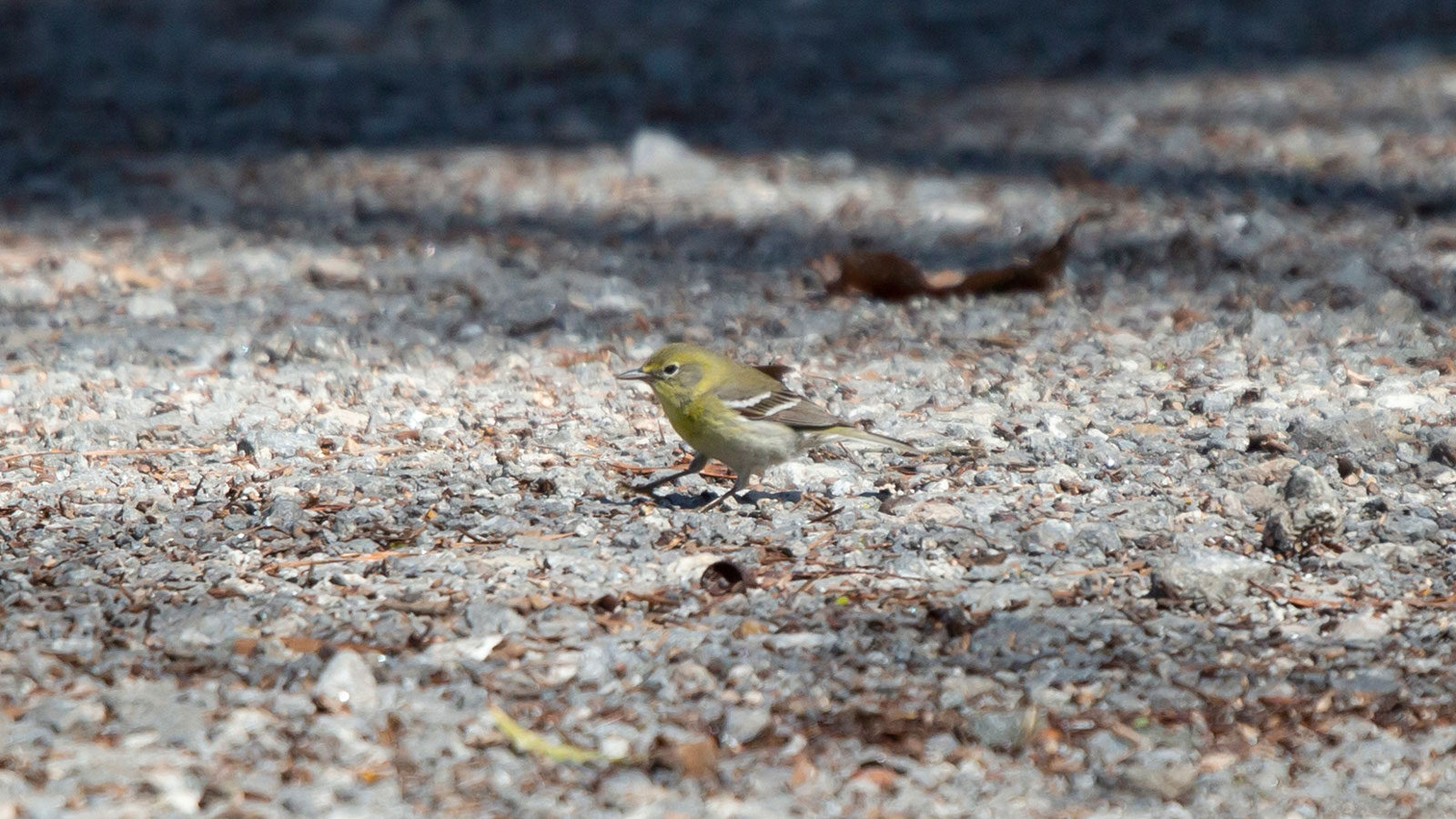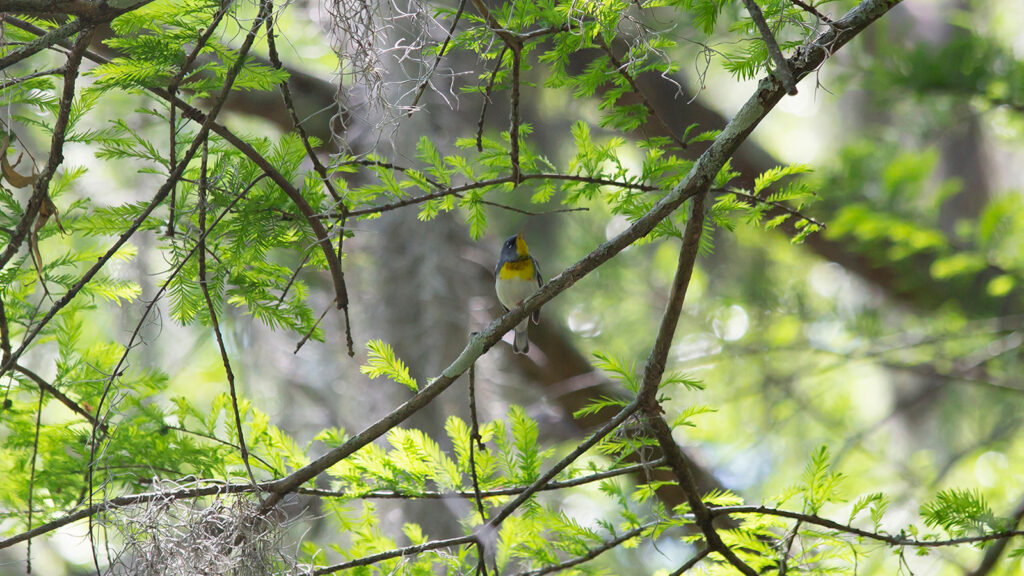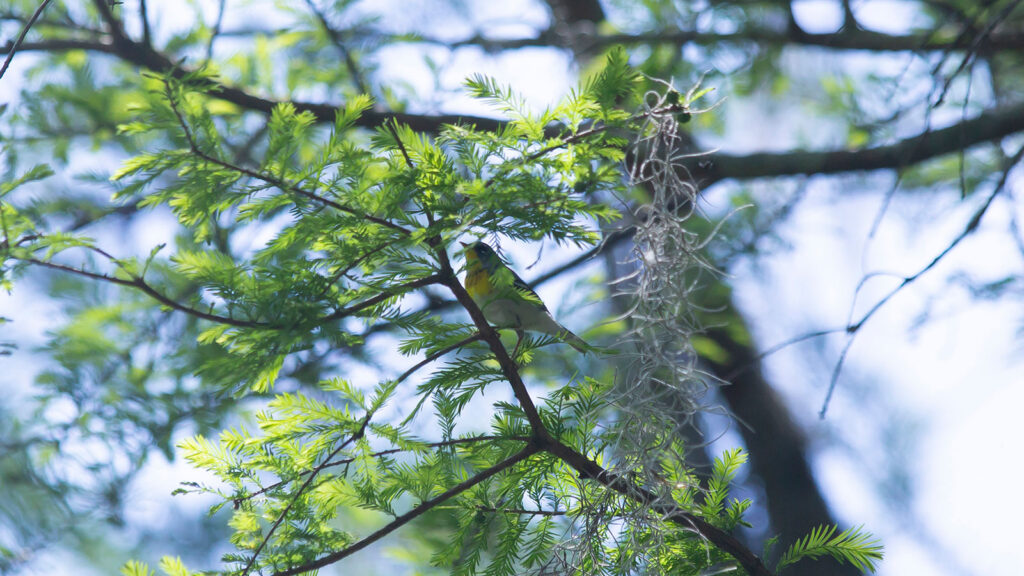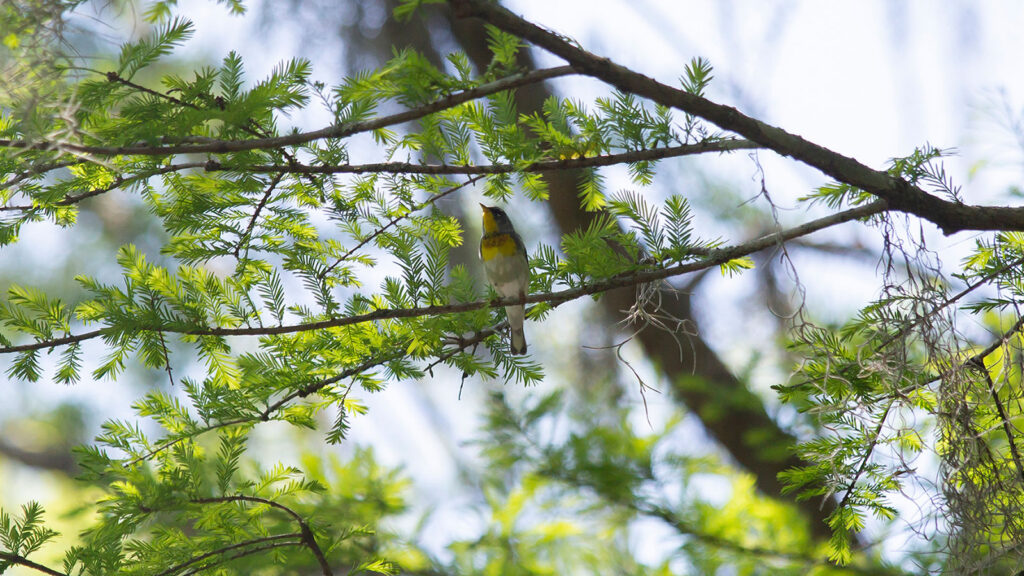Northern Parulas
at
a Glance
Key Features:
Northern parulas are gray, with olive patch on their backs, yellow throats and breasts, and white bellies.
Least Concern - Population Increasing
Habitat:
Forests, fields, bottomlands, pastures, streams, and swamps
nesting habits:
Northern parulas build nests at the end of branches in moss or lichen out of grass, hair, lichen, moss, and pine needles.
seasons northern parulas are active in our area:
Spring, summer
Diet:
Insects, spiders, berries, bud scales, nectar and, seeds
hunting Behavior:
Northern parulas forage by gleaning leaves.
Commonly Confused With:
Pine Warblers

Northern parulas are often confused with pine warblers because both have yellow and gray on them.


